On Defect Evolution in EBM Additively Manufactured Ti-6Al-4V via In Situ Investigations
Abstract
1. Introduction
2. Materials and Experimental Methods
2.1. Materials
2.2. Sample Preparation
2.3. Experimental Set-Up
3. Results
3.1. Defect Characterization of As-Received Ti-6Al-4V
3.2. In Situ Observation and Analysis
3.2.1. Uniaxial Tensile Results
3.2.2. In Situ Characterization of Defect Evolution
3.3. Fracture Fractography
4. Conclusions
- The geometric shape of the spherical defect was initially dominated by the loading in the tensile direction before the fracture stage, i.e., a transition from a spherical shape to an ellipse shape. Afterwards, an irregular shape was produced due to the microcrack-induced localized multi-axial stress state.
- The occurrence of defects is bound to produce localized stress concentration, leading to the aggravation of the localized slip lines, while the earliest microcrack formation is not relevant to the spherical defect. Early microcracks primarily initiated from the edges of the prior β columnar grains and the edges of the α’ clusters, and, as the deformation increased, microcracks were generated at the edges and interior of the needle-like α’ lamella.
- Due to the presence of colonies and grain boundaries in the plastic zone located at the tips of the microcracks, and their orientation perpendicular to the crack direction, the propagation of the microcracks was hindered.
Author Contributions
Funding
Institutional Review Board Statement
Informed Consent Statement
Data Availability Statement
Conflicts of Interest
References
- Vayssette, B.; Saintier, N.; Brugger, C.; El May, M. Surface roughness effect of SLM and EBM Ti-6Al-4V on multiaxial high cycle fatigue. Theor. Appl. Fract. Mech. 2020, 108, 102581. [Google Scholar] [CrossRef]
- Qian, G.; Jian, Z.M.; Pan, X.N.; Berto, F. In-situ investigation on fatigue behaviors of Ti-6Al-4V manufactured by selective laser melting. Int. J. Fatigue 2020, 133, 105424. [Google Scholar] [CrossRef]
- Yánez, A.M.F.; Fiorucci Cuadrado, A.; Martel, O.; Monopoli, D. Surface roughness effects on the fatigue behavior of gyroid cellular structures obtained by additive manufacturing. Int. J. Fatigue 2020, 138, 105702. [Google Scholar] [CrossRef]
- Dinh, T.D.; Han, S.; Yaghoubi, V.; Xiang, H.; Erdelyi, H.; Craeghs, T.; Segers, J.; Paepegem, W.W. Modeling detrimental effects of high surface roughness on the fatigue behavior of additively manufactured Ti-6Al-4V alloys. Int. J. Fatigue 2021, 144, 106034. [Google Scholar] [CrossRef]
- Frazier, W.E. Metal additive manufacturing: A review. J. Mater. Eng. Perform. 2014, 23, 1917–1928. [Google Scholar] [CrossRef]
- Thompson, S.M.; Aspin, Z.S.; Shamsaei, N.; Elwany, A.; Bian, L. Additive manufacturing of heat exchangers: A case study on a multi-layered Ti–6Al–4V oscillating heat pipe. Addit. Manuf. 2015, 8, 163–174. [Google Scholar] [CrossRef]
- Li, N.; Huang, S.; Zhang, G.D.; Qin, R.Y.; Liu, W.; Xiong, H.P.; Shi, G.Q.; Blackburn, J. Progress in additive manufacturing on new materials: A review. J. Mater. Sci. Technol. 2019, 35, 242–269. [Google Scholar] [CrossRef]
- Bikas, H.; Stavropoulos, P.; Chryssolouris, G. Additive manufacturing methods and modelling approaches: A critical review. Int. J. Adv. Manuf. Technol. 2016, 83, 389–405. [Google Scholar] [CrossRef]
- Haynes, R. Effect of porosity content on the tensile strength of porous materials. Powder Metall. 1971, 14, 64–70. [Google Scholar] [CrossRef]
- Haynes, R. Effects of porosity on the tensile strengths of sintered irons. Metal Powder Rep. 1991, 46, 49–51. [Google Scholar] [CrossRef]
- Liu, Y.J.; Li, S.J.; Wang, H.L.; Hou, W.T.; Hao, Y.L.; Yang, R.; Sercombe, T.B.; Zhang, L.C. Microstructure, defects and mechanical behavior of beta-type titanium porous structures manufactured by electron beam melting and selective laser melting. Acta Mater. 2016, 113, 56–67. [Google Scholar] [CrossRef]
- Liu, Y.J.; Wang, H.L.; Li, S.J.; Wang, S.G.; Wang, W.J.; Hou, W.T.; Hao, Y.L.; Yang, R.; Zhang, L.C. Compressive and fatigue behavior of beta-type titanium porous structures fabricated by electron beam melting. Acta Mater. 2017, 126, 58–66. [Google Scholar] [CrossRef]
- Osetsky, Y.N.; Bacon, D.J. Atomic-scale mechanisms of void hardening in bcc and fcc metals. Philos. Mag. 2010, 90, 945–961. [Google Scholar] [CrossRef]
- Kumar, K.S.; Duesbery, M.S.; Louat, N.P.; Provenzano, V.; DiPietro, M.S. Microporous fine-grained copper: Structure and properties. Philos. Mag. A 2001, 81, 1023–1040. [Google Scholar] [CrossRef]
- Xu, W.; Lui, E.W.; Pateras, A.; Qian, M.; Brandt, M.J. In situ tailoring microstructure in additively manufactured Ti-6Al-4V for superior mechanical performance. Acta Mater. 2017, 125, 390–400. [Google Scholar] [CrossRef]
- Gong, H.; Rafi, K.; Gu, H.; Ram, G.J.; Starr, T.; Stucker, B. Influence of defects on mechanical properties of Ti-6Al-4 V components produced by selective laser melting and electron beam melting. Mater. Des. 2015, 86, 545–554. [Google Scholar] [CrossRef]
- Agius, D.; Kyriakos, K.; Chris, W. Elastoplastic response of as-built SLM and wrought Ti-6Al-4V under symmetric and asymmetric strain-controlled cyclic loading. Rapid Prototyp. J. 2018, 24, 1409–1420. [Google Scholar] [CrossRef]
- Gupta, A.; Bennett, C.J.; Sun, W. The role of defects and characterisation of tensile behaviour of EBM Additive manufactured Ti-6Al-4V: An experimental study at elevated temperature. Eng. Fail. Anal. 2021, 120, 105115. [Google Scholar] [CrossRef]
- Chern, A.H.; Nandwana, P.; McDaniels, R.; Dehoff, R.R.; Liaw, P.K.; Tryon, R.; Duty, C.E. Build orientation, surface roughness, and scan path influence on the microstructure, mechanical properties, and flexural fatigue behavior of Ti-6Al-4V fabricated by electron beam melting. Mater. Sci. Eng. A 2020, 772, 138740. [Google Scholar] [CrossRef]
- Lu, J.X.; Chang, L.; Wang, J.; Sang, L.J.; Wu, S.K.; Zhang, Y.F. In-situ investigation of the anisotropic mechanical properties of laser direct metal deposition Ti-6Al-4V alloy. Mater. Sci. Eng. A 2018, 712, 199–205. [Google Scholar] [CrossRef]
- Yang, Z.W.; Fu, L.Q.; Wang, S.L.; Zhang, M.; Wang, Y.; Ma, Z.Q.; Wang, D.P. Balance of strength and plasticity of additive manufactured Ti-6Al-4V alloy by forming TiB whiskers with cyclic gradient distribution. Addit. Manuf. 2021, 39, 101883. [Google Scholar] [CrossRef]
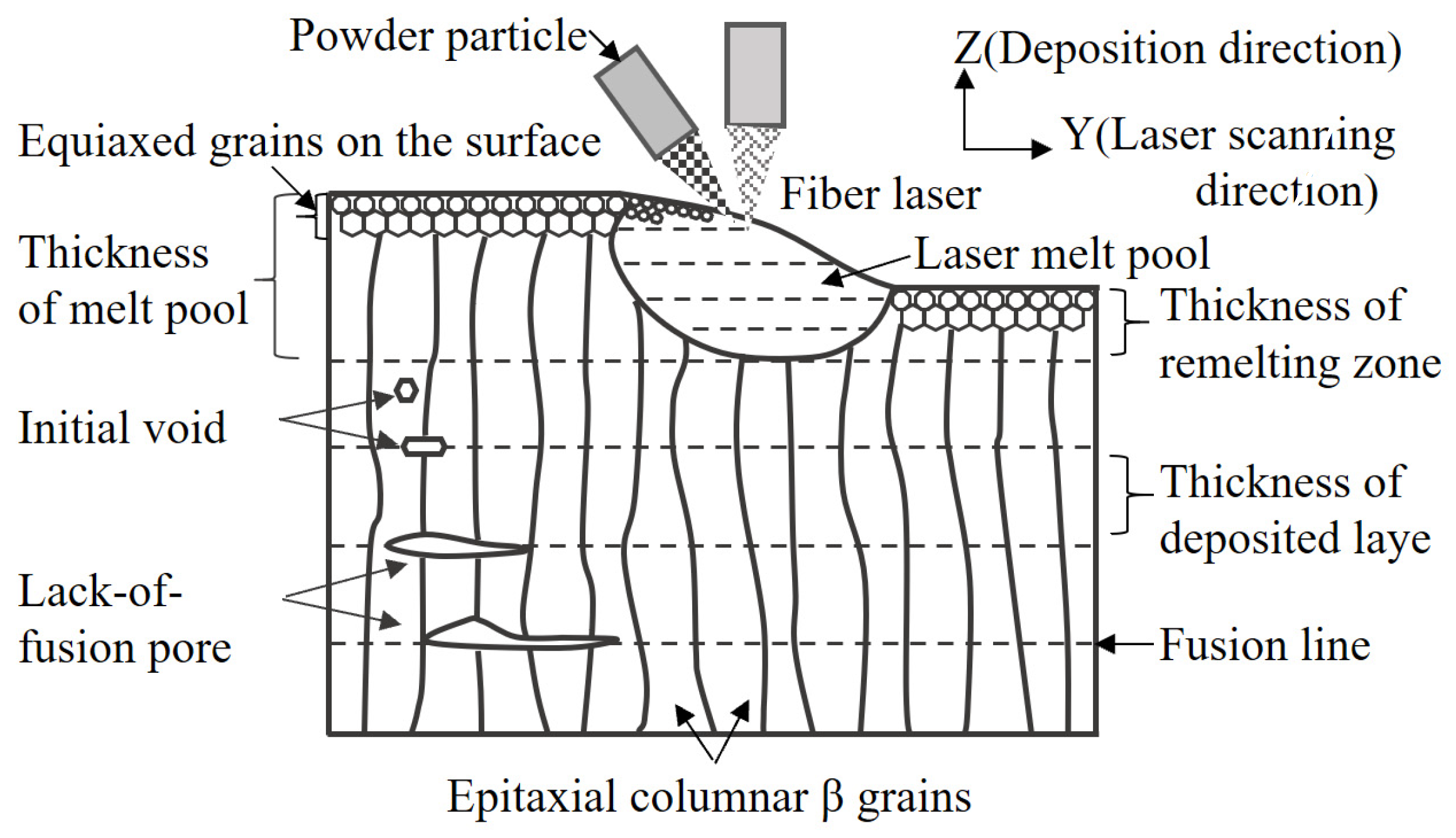

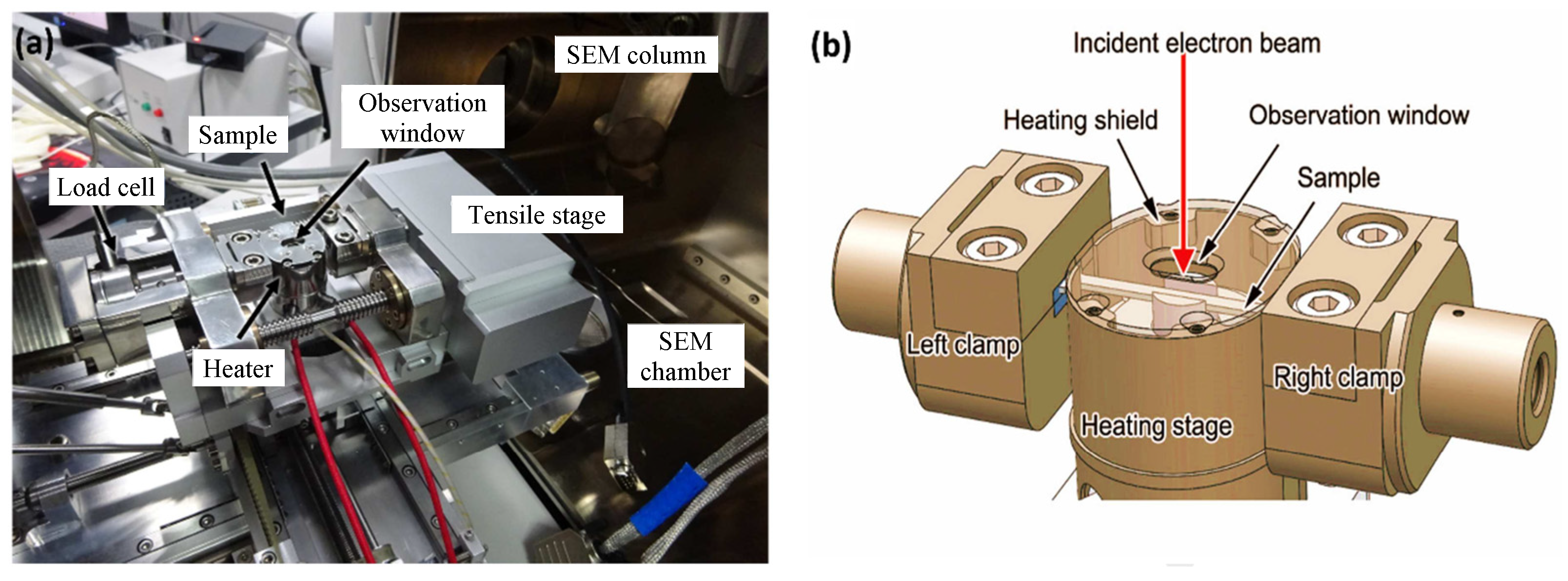
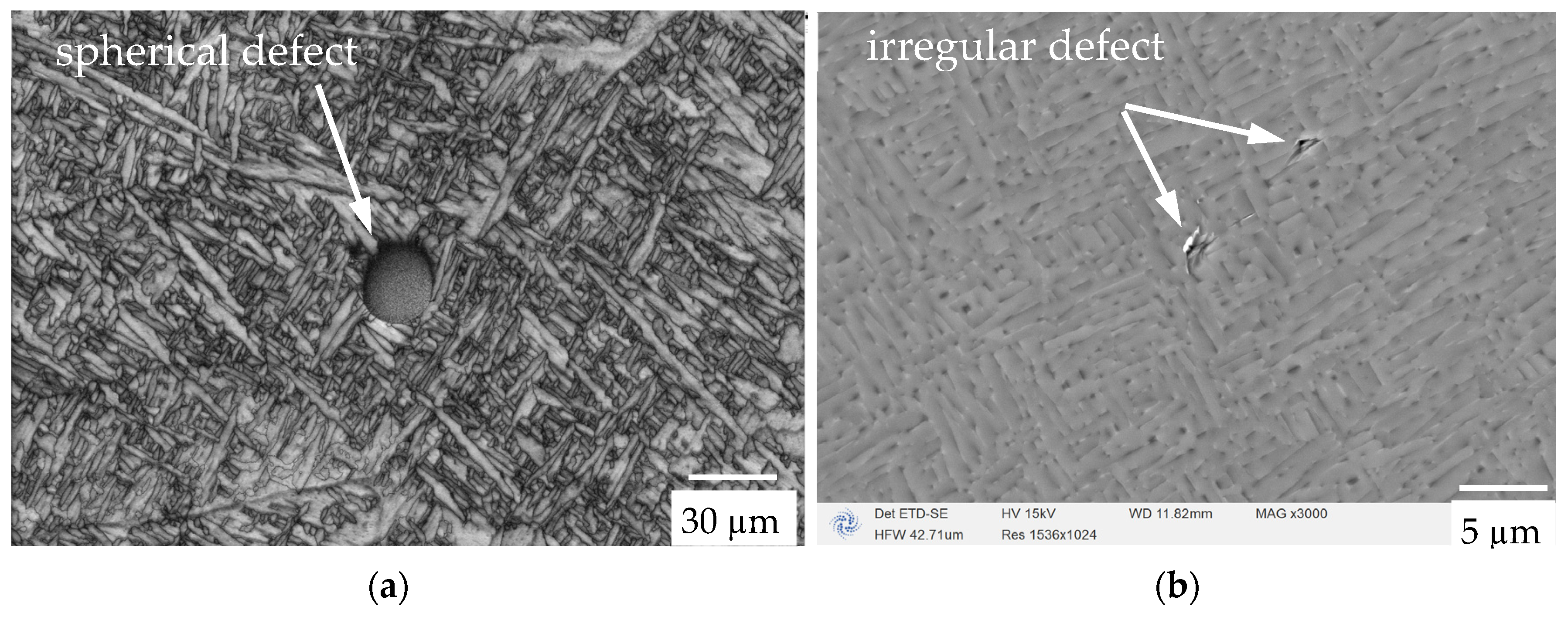
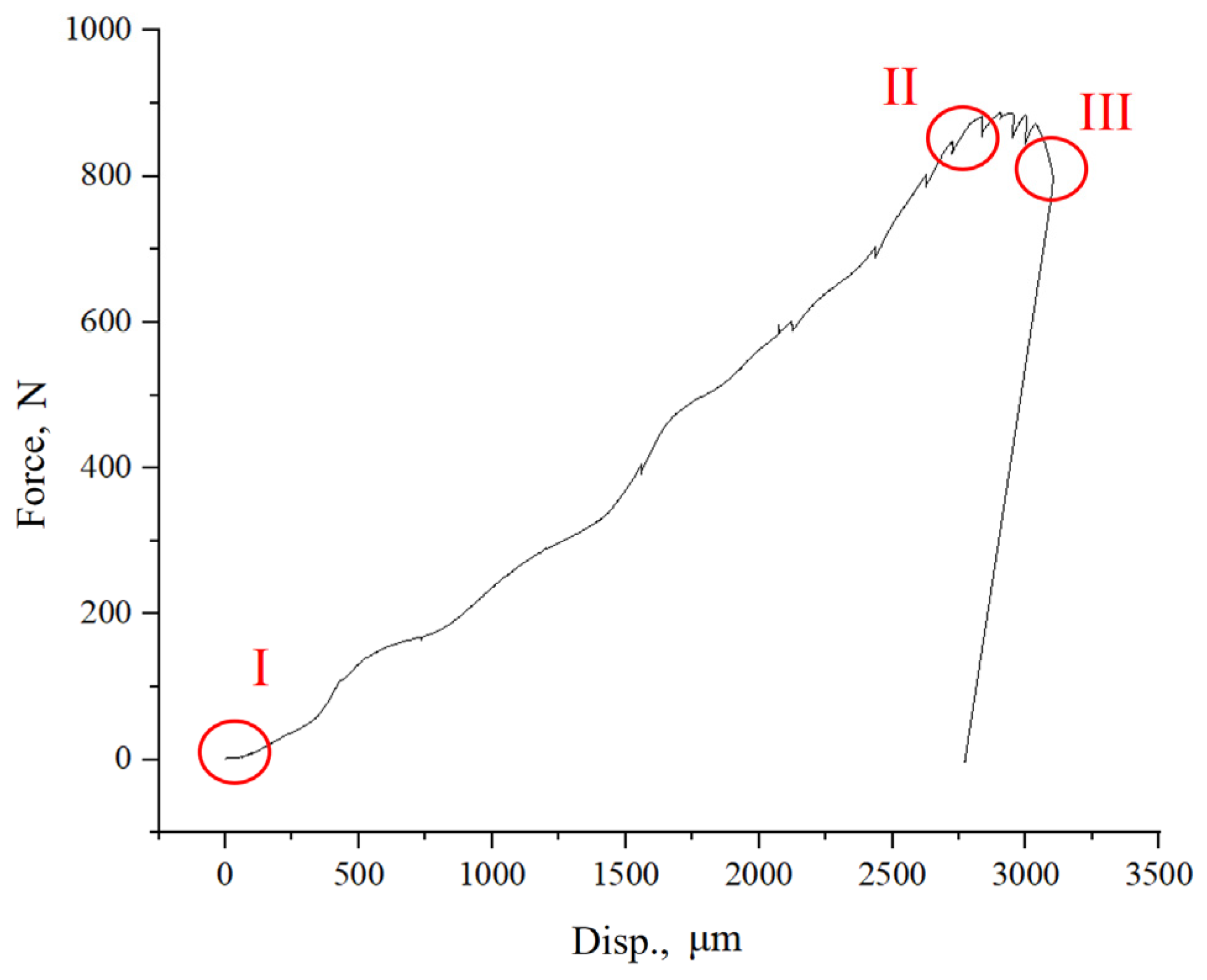
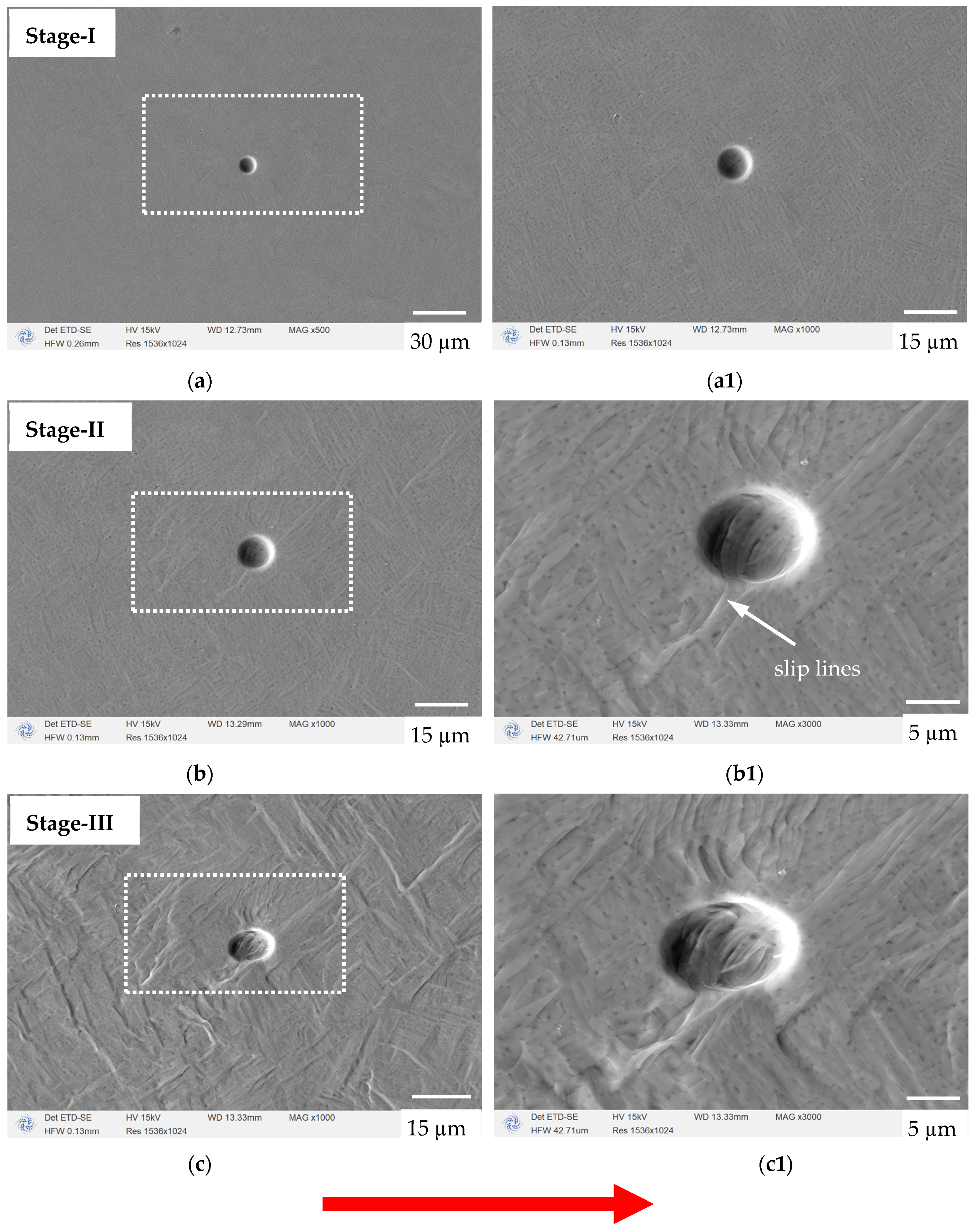
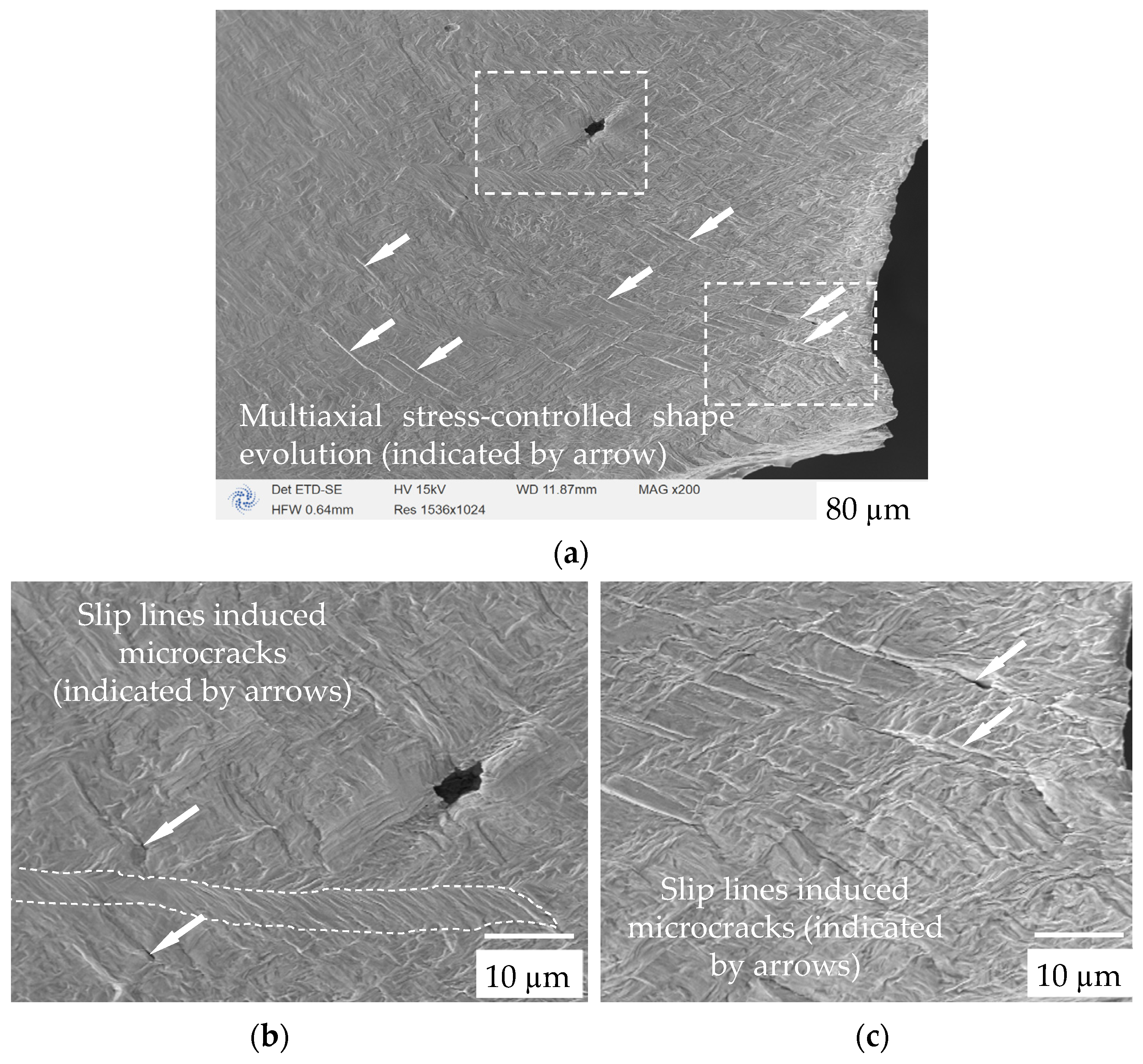

| Al | V | C | O | N | H | Fe | Ti |
|---|---|---|---|---|---|---|---|
| 6.40 | 4.0 | 0.02 | 0.12 | 0.02 | 0.002 | 0.19 | Bal. |
| Process Parameters | Values |
|---|---|
| Laser power (kW) | 6 |
| Laser thickness (mm) | 0.7 |
| Laser scan speed (mm/min) | 800–1200 |
| Hatch width (mm) | 5 |
| Hatch distance (mm) | 1–3 |
| Hatch overlap (mm) | 0 |
| Beam diameter (mm) | 8 |
| Powder feeding rate (g/h) | 800–1000 |
Disclaimer/Publisher’s Note: The statements, opinions and data contained in all publications are solely those of the individual author(s) and contributor(s) and not of MDPI and/or the editor(s). MDPI and/or the editor(s) disclaim responsibility for any injury to people or property resulting from any ideas, methods, instructions or products referred to in the content. |
© 2024 by the authors. Licensee MDPI, Basel, Switzerland. This article is an open access article distributed under the terms and conditions of the Creative Commons Attribution (CC BY) license (https://creativecommons.org/licenses/by/4.0/).
Share and Cite
Sun, W.; Li, M.; Li, H. On Defect Evolution in EBM Additively Manufactured Ti-6Al-4V via In Situ Investigations. Materials 2024, 17, 2888. https://doi.org/10.3390/ma17122888
Sun W, Li M, Li H. On Defect Evolution in EBM Additively Manufactured Ti-6Al-4V via In Situ Investigations. Materials. 2024; 17(12):2888. https://doi.org/10.3390/ma17122888
Chicago/Turabian StyleSun, Wei, Ming Li, and Hezong Li. 2024. "On Defect Evolution in EBM Additively Manufactured Ti-6Al-4V via In Situ Investigations" Materials 17, no. 12: 2888. https://doi.org/10.3390/ma17122888
APA StyleSun, W., Li, M., & Li, H. (2024). On Defect Evolution in EBM Additively Manufactured Ti-6Al-4V via In Situ Investigations. Materials, 17(12), 2888. https://doi.org/10.3390/ma17122888







